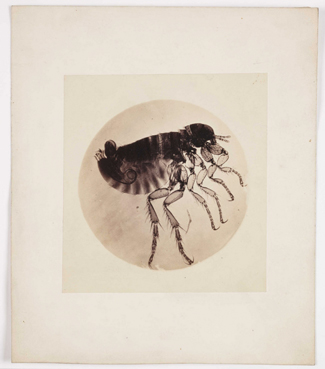Three Reasons Flea Treatments Fail
By Chris Williams on May 6, 2015.
 Fleas are tough to control. These small insects feed on the blood of mammals, including humans. There are some 2,000 species of fleas known throughout the world. All fleas are associated with warm-blooded hosts and feed on their blood. The most common species infesting the home is the cat flea, Ctenocephalides felis. Cat fleas have been found on humans, dogs, rats, raccoons, opossums, and foxes among others. Other species, such as the dog flea, chicken flea, mouse flea, oriental rat flea, northern rat flea, squirrel flea, rabbit flea, human flea, and the sticktight flea can cause problems as well. Flea infestations have been linked to bubonic plague, murine typhus, and tape worms.
Fleas are tough to control. These small insects feed on the blood of mammals, including humans. There are some 2,000 species of fleas known throughout the world. All fleas are associated with warm-blooded hosts and feed on their blood. The most common species infesting the home is the cat flea, Ctenocephalides felis. Cat fleas have been found on humans, dogs, rats, raccoons, opossums, and foxes among others. Other species, such as the dog flea, chicken flea, mouse flea, oriental rat flea, northern rat flea, squirrel flea, rabbit flea, human flea, and the sticktight flea can cause problems as well. Flea infestations have been linked to bubonic plague, murine typhus, and tape worms.
Fleas have a complex, four stage life cycle: egg, larvae, pupae, and adult. Females may lay more than 20 eggs a day, 3 to 18 at time after a blood meal. Each female flea may lay more than 800 eggs in her lifetime. The tiny pearly white eggs, which fall off the host, hatch within 12 days into legless larvae. The eggs and larvae accumulate in areas where the pet sleeps and spends time. As adults feed on the hosts blood, they produce feces made up largely of undigested blood. Heavy accumulations of feces and eggs may resemble “salt and pepper”. The hairy, worm-like larvae (1.5mm-5mm in length) have a visible brown head, and can be seen with the naked eye. Larval development goes through 3 stages, and may take as little as 8 days to as long as 200 days, depending on temperature and humidity. Once larval development is complete, the larvae spins a cocoon in which to pupate. This cocoon is mixed with debris and stuck against the substrate. The pupae is protected from chemical treatments inside the cocoon.
When conditions are favorable, the pupal stage lasts one to two weeks. If conditions are not favorable it may take up to a year. Low temperatures, low humidity, and lack of hosts may lengthen pupation. Once pupation is complete, emergence takes place. Emergence in stimulated by vibrations, host warmth, and carbon dioxide. Huge flea populations can may develop when several generations of un-hatched fleas emerge simultaneously in response to the presence of a host. This situation commonly arises when a house is left vacant after residents with pets have moved out or gone on vacation. The first sign of a host triggers mass emergence and hundreds if not thousands of hungry, newly emerged fleas jumping everywhere. Fleas can jump a relatively long distance compared to their size and move purposefully toward the host. I have witnessed just such an event and can assure you, it is frightening.
After emergence takes place, male and females quickly seek a blood meal. Initially the adults are very small, and dark brown to black in color. Once feeding on the host takes place, the adult fleas swell up and appear light reddish brown in color. Without feeding on a host, newly emerged fleas can live one to two months. If only one feeding takes place adults may live up to six to eight months. If nothing is done to combat the flea populations they quickly build up to unacceptable levels.
Once a flea treatment takes place, the chemicals start to work. Fleas that hatch contact the chemical and expire. Larvae are also killed during the initial treatment. Insect Growth Regulators in the mix also prevent larval from forming pupae. In most cases the initial treatment is all that is required to solve the flea problem. If all recommendations are followed, fleas should be controlled within 60 days.
Three Reasons Flea Treatments Fail
- Not vacuuming! Daily vacuuming will stimulate pupal hatching, contain recently hatched fleas, and clean the area of any dead fleas and debris. If vacuuming is not performed, pupae will wait to hatch and attack the first person in the area. Pupae can only wait so long to hatch, give them every opportunity to contact the chemicals or vacuum!
- Clutter! Treatment can only be made to specific floor surfaces and furniture. Basements and rooms filled with stored items on the floor hamper chemical application and vacuuming! Preparation is key to any successful flea treatment! Any inaccessible floor areas may contain eggs, larvae, and pupae.
- Re-infestation! Treatment of pets is critical, in order for the treatment to be effective, the stream of new eggs falling off the pet must be stopped. Veterinary treatments as well as over the counter products are available to treat pets in a variety of ways. Keeping cats indoors, and minimizing the time dogs spend in high dog traffic areas can also help!
If you have a flea problem, the best way to get started is to consult a Pest Control Professional from Colonial Pest Control Inc.
Photo credit: National Media Museum / Foter / No known copyright restrictions
Stay up-to-date with Colonial Pest’s email newsletter!